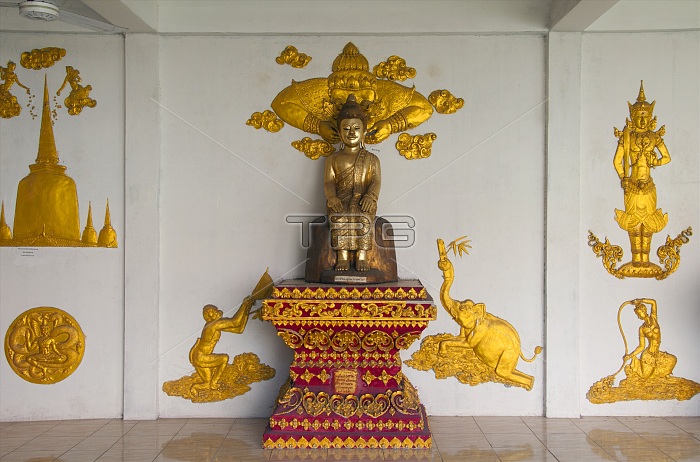
In Hindu mythology, Rahu is a snake that swallows the sun or the moon causing eclipses. He is depicted in art as a dragon with no body riding a chariot drawn by eight black horses. Rahu is one of the navagrahas (nine planets) in Vedic astrology. The Rahu kala (time of day under the influence of Rahu) is considered inauspicious.
According to legend, during the Samudra manthan, the asura Rahu drank some of the divine nectar. But before the nectar could pass his throat, Mohini (the female avatar of Vishnu) cut off his head. The head, however, remained immortal. It is believed that this immortal head occasionally swallows the sun or the moon, causing eclipses. Then, the sun or moon passes through the opening at the neck, ending the eclipse.
Wat Yang Kuang, Suriyawong Road, Chiang Mai has a long and chequered history. Originally mentioned in the Nirat Haripunchai (1517) as Wat Nang Rua, it was abandoned as a result of the destructive 18th century wars with Burma, leading to the abandonment of the city of Chiang Mai between 1775 and 1797 on the instruction of Chao Kawila.
When Kawila ordered the repopulation of Chiang Mai in 1797, he transported Tai Khoen people from the neighbourhood of Wat Yang Kuang in Chiang Tung (Kengtung in the eastern part of Shan State) to Chiang Mai, settling them south of the Old City, in the newly populated area between the Old City walls and the earthen ramparts of Kamphaeng Din. Following the custom of the time, the resettled Tai Khoen centred their new community on the former Wat Nang Rua, which they gave the new name Wat Yang Kuang in honour of their former temple and place of origin.
The temple fell into disuse in the late 19th or early 20th century, but was been restored and re-established between 2008 and 2012.
| px | px | dpi | = | cm | x | cm | = | MB |
Details
Creative#:
TPG32696064
Source:
達志影像
Authorization Type:
RF
Release Information:
須由TPG 完整授權
Model Release:
No
Property Release:
No
Right to Privacy:
No
Same folder images:

 Loading
Loading